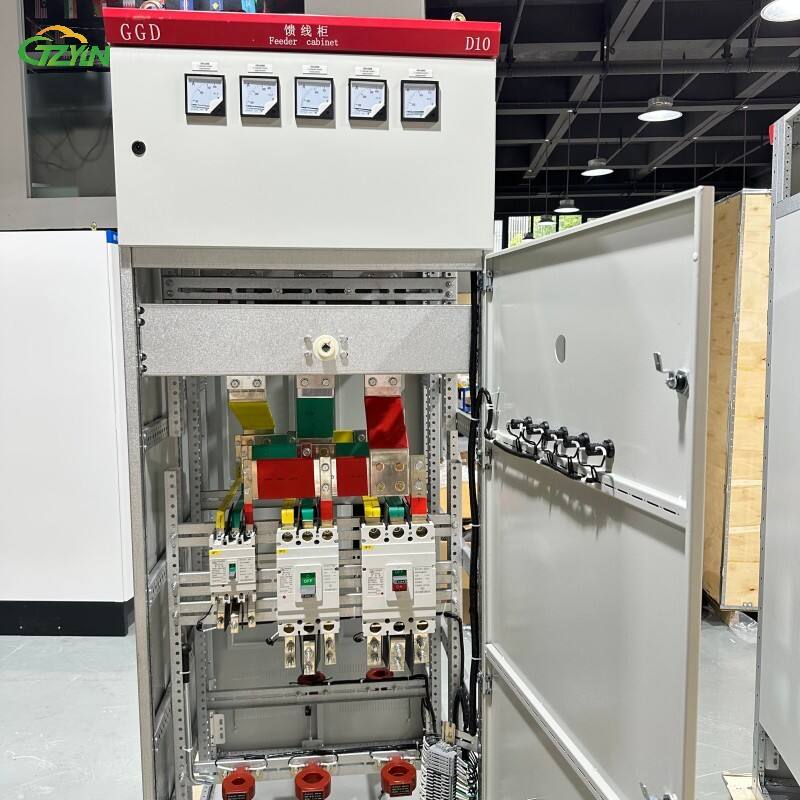Understanding Electrical Protection Systems in Power Distribution
Electrical safety and equipment protection are critical aspects of any power distribution system. At the heart of this protection lies the incoming cabinet, a sophisticated piece of electrical infrastructure that serves as the first line of defense against potentially damaging fault currents. This vital component not only manages the incoming power supply but also ensures the safety and longevity of downstream electrical panels and equipment.
The Fundamental Role of Incoming Cabinets
Primary Protection Mechanisms
The incoming cabinet houses essential protective devices that monitor and control the flow of electrical current. These mechanisms include circuit breakers, fuses, and protective relays that work in harmony to detect and interrupt fault currents before they can propagate through the system. When a fault occurs, these devices respond within milliseconds, preventing catastrophic damage to downstream equipment.
Modern incoming cabinets incorporate advanced sensing technology that continuously monitors current levels, voltage fluctuations, and power quality parameters. This real-time monitoring ensures immediate response to any electrical anomalies that could potentially harm the system.
Coordination and Selectivity
One of the most crucial aspects of an incoming cabinet's protective function is its ability to coordinate with other protective devices in the system. This coordination, known as selective coordination, ensures that only the affected portion of the system is isolated during a fault condition, maintaining power supply to unaffected areas.
Through careful selection and setting of protective devices, the incoming cabinet establishes a hierarchy of protection that prevents unnecessary system-wide shutdowns while maintaining comprehensive fault protection.
Advanced Protection Features in Modern Incoming Cabinets
Smart Protection Systems
Contemporary incoming cabinets are equipped with microprocessor-based protection relays that offer enhanced functionality beyond basic overcurrent protection. These smart systems can detect ground faults, phase imbalances, and other power quality issues that could potentially damage downstream equipment.
The integration of digital protection systems allows for more precise control and faster response times, significantly improving the overall protection capabilities of the incoming cabinet. These systems can be programmed with complex protection algorithms that adapt to varying load conditions and system requirements.
Communication and Monitoring Capabilities
Modern incoming cabinets feature advanced communication interfaces that enable real-time monitoring and control. This connectivity allows facility managers to track power quality parameters, receive instant alerts during fault conditions, and analyze historical data for preventive maintenance.
The ability to remotely monitor and control the incoming cabinet's protective functions has revolutionized power distribution management, enabling proactive maintenance and reducing the risk of equipment failure.
Design Considerations for Maximum Protection
Physical Construction and Layout
The physical design of an incoming cabinet plays a crucial role in its protective capabilities. Robust construction materials, proper ventilation, and adequate spacing between components ensure reliable operation under all conditions. The cabinet's internal layout must facilitate easy maintenance while maintaining optimal protection levels.
Careful consideration is given to the arrangement of busbars, insulators, and protective devices to minimize the impact of fault currents and ensure effective isolation during fault conditions.
Rating and Specification Selection
Selecting the appropriate ratings for incoming cabinet components is essential for effective downstream protection. This includes proper sizing of circuit breakers, careful calculation of short-circuit ratings, and consideration of environmental factors that might affect performance.
Engineers must account for future expansion possibilities and potential increases in fault current levels when specifying incoming cabinet components, ensuring long-term protection capability.
Maintenance and Testing Requirements
Regular Inspection Protocols
Maintaining the protective functionality of an incoming cabinet requires regular inspection and testing of all components. This includes visual inspections, thermal imaging surveys, and electrical testing of protective devices to ensure they will operate correctly when needed.
A comprehensive maintenance program should include verification of protection settings, testing of communication systems, and assessment of environmental conditions that could affect cabinet performance.
Performance Verification
Regular testing of protection systems ensures that the incoming cabinet will respond appropriately to fault conditions. This includes primary injection testing of circuit breakers, secondary injection testing of protection relays, and verification of coordination settings.
Documentation of all testing and maintenance activities is essential for tracking system performance and maintaining compliance with regulatory requirements.
Frequently Asked Questions
What is the typical lifespan of an incoming cabinet?
The typical lifespan of a properly maintained incoming cabinet ranges from 20 to 30 years. However, this can vary significantly based on environmental conditions, usage patterns, and maintenance practices. Regular maintenance and timely component updates can extend this lifespan considerably.
How often should incoming cabinet protection systems be tested?
Protection systems in incoming cabinets should undergo comprehensive testing at least annually, with more frequent visual inspections recommended quarterly. Critical installations may require more frequent testing based on industry standards and local regulations.
Can an incoming cabinet be upgraded with modern protection features?
Yes, many existing incoming cabinets can be retrofitted with modern protection features such as digital relays and communication systems. However, the feasibility and extent of upgrades depend on the cabinet's original design, available space, and current ratings.
What are the signs that an incoming cabinet needs maintenance?
Key indicators include unusual noises, visible wear on components, increased operating temperatures, frequent tripping, or deterioration of insulation materials. Any changes in normal operating parameters should be investigated promptly to prevent potential failures.


